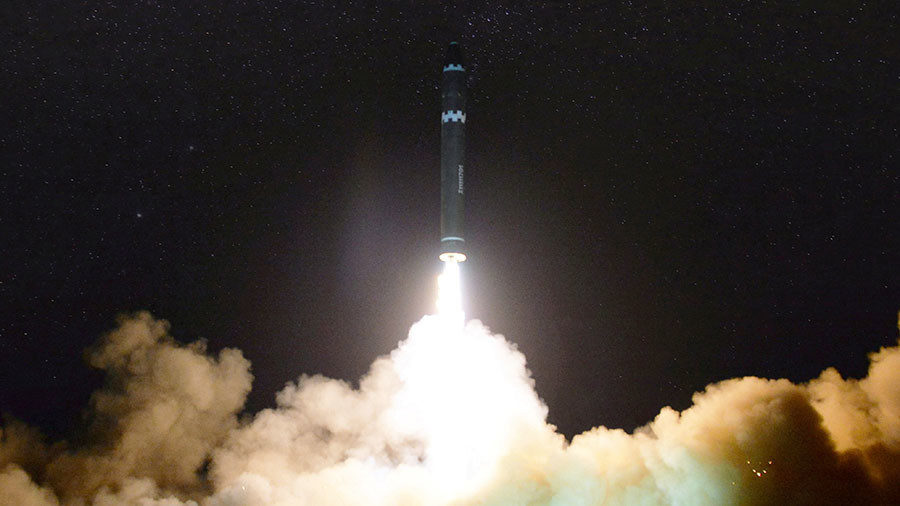
© KCNA / Reuters
For years, Woo Seung-yep was a lone voice in the wilderness, warning fellow South Koreans to prepare for impending doom. But as tensions with North Korea rapidly escalate, he is no longer mocked.
Mr Woo, 44, has become the face of the South's war preppers,
a growing band of urban-disaster specialists who keep survival bags laden with essentials that they can grab at a moment's notice to one of the country's many nuclear fallout shelters.
In recent months he has seen a surge in interest in his online forum, Survival 21, founded in 2010 to discuss how to stay alive during war, disaster or nuclear holocaust.
Close to 20,000, among them teenagers, old people, business executives, professors and students, have now signed up."Many members profess their worries," the former office worker told
The Telegraph in an interview. "The main question today is 'will a war break out in Korea? And if so, when would that be?'"
Mr Woo, who has advised on a government awareness manual, tells his followers to keep a survival pack stocked at all times and to know where to run to if conflict breaks out.
His own emergency supplies include water, freeze-dried food, a torch, radio, hat, raincoat, medical kit and warm blanket.
While there is growing interest in private bunkers like the $19,000 US-made BombNado shelter currently popular in Japan, Mr Woo believes a simple underground garage or cellar is the safest haven under fire.
"If you live in an apartment building, your underground garage would be safer than running to the closest subway station," he said. "Going outside to look for a bunker could be more dangerous."
Mr Woo admits he still faces accusations of scaremongering. Prepping has traditionally held a negative stigma in a country used to living with a nuclear bomb threat on its doorstep.Weapons of mass destruction aside, the unleashing of North Korea's build-up of artillery along the border could, in the worst-case scenario,
kill over 100,000 in the greater Seoul area in the first 48 hours of battle.
But the constant barrage of war-mongering rhetoric between Pyongyang and US President Donald Trump, is beginning to rattle even South Korea's sanguine public.
North Korea's threats in August to fire ballistic missiles towards the US territory of Guam
after Mr Trump warned of "fire and fury" against Pyongyang prompted a rush on ready-to-eat meals and the sale of mini gold bars in the South.
Even so,
Mr Woo believes South Korea is woefully unprepared for war. Public awareness about the locations of Seoul's more than 3,200 designated bomb shelters is limited, and few shelters have long-term food supplies, water or gas masks."Most families in Korea are used to going shopping once a week and only buy a week's stock," he said.
"The majority of the population have not suffered a major disaster that affected their lives so powerfully as to make them feel the urgency. War is somebody else's story," he said.
Mr Woo's own sense of danger stems from his military service when, in 1996, he was deployed to tackle North Korean infiltrators and his commanding officer was shot in the head.
He also professes to be disillusioned with the government's handling of major disasters, including the
Sewol ferry sinking in 2014 in which 304 people, mainly schoolchildren, died.
On the bright side, he does not believe war on the Korean peninsula will break out this year."But within the next year, I expect some kind of conflict, even if it's just cross-fire," he said.
"I am more worried about the US, as I fear it may be planning a pre-emptive strike."The US cannot tolerate North Korea's nuclear capability, and seems to be laying the ground to justify an attack."
Comment: A war with North Korea would be disastrous. Given U.S. rhetoric, it's no wonder South Koreans are prepping for the worst. Who can blame them? They're the ones on the front lines, so to speak.
After nearly a year in office, Trump has yet to pre-emptively strike North Korea. Can he go another year? He'd better watch out: if he keeps this up, other nations will get the idea that he doesn't actually want to start any wars...